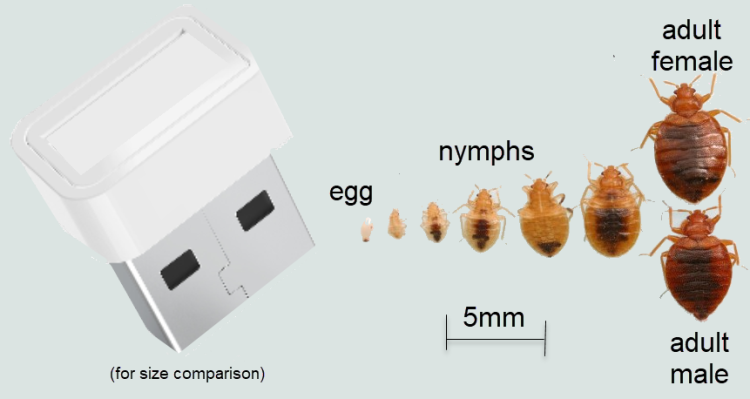Understanding the lifecycle of bed bugs is crucial in effectively dealing with an infestation. These persistent pests go through several stages in their life, and each stage requires different strategies for control and elimination. Here’s an overview of the bed bug lifecycle to help you understand what you’re up against.
The Egg Stage: The Beginning
Bed bugs start their life as tiny, pinhead-sized eggs. These eggs are usually laid in hidden areas and can be difficult to spot. Female bed bugs can lay hundreds of eggs over their lifetime.

Nymph Stages: Growth and Development
After hatching, bed bugs go through five nymph stages. In each stage, they need a blood meal to grow and progress to the next stage. Nymphs are smaller and not as reddish as adult bed bugs, making them harder to spot.

The Adult Stage: Maturity and Reproduction
Once fully grown, adult bed bugs are about the size of an apple seed and have a reddish-brown color. This is the stage where they are most visible and active, especially at night. Adults can live for several months and are capable of surviving long periods without feeding.
Signs of Infestation at Different Stages
Understanding the signs of infestation at different lifecycle stages is key to early detection and control. Look for tiny white eggs in mattress seams, molted skins from nymphs, and live adults around bed frames and headboards.
Conclusion
Dealing with bed bugs requires understanding their lifecycle and adapting your approach accordingly. Regular inspections and prompt action at the first sign of an infestation are crucial. For additional support and analysis, visit Bedbug-Scanner.com, our AI-powered tool that helps in the early detection and management of bed bugs.
Remember, knowledge is power when it comes to combating bed bugs. Stay informed and vigilant to protect your home from these unwelcome guests.
